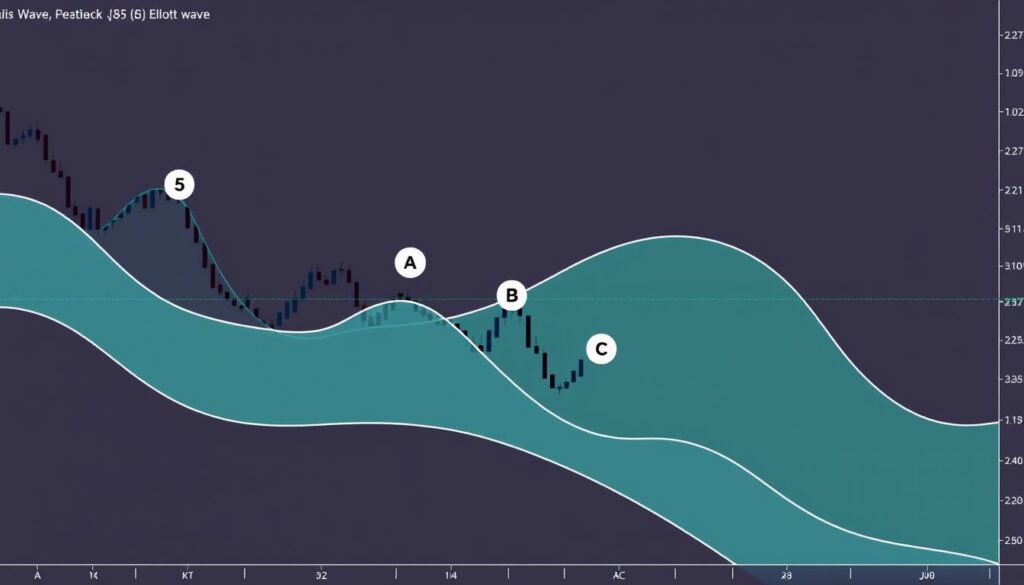Now Reading: Latest Cryptocurrency News and Market Updates Today
- 01
Latest Cryptocurrency News and Market Updates Today
Latest Cryptocurrency News and Market Updates Today

Quick briefing: this piece maps what matters for traders and investors in crypto right now.
We pull timestamps, daily digests, and beats from sources such as CoinDesk to show how Markets, Finance, and Policy move prices.
Expect concise context on bitcoin price and ethereum price, intraday flows, liquidity pockets, and signals that can push assets toward an all-time high.
The write-up highlights sector shifts—DeFi, NFTs, staking, L2 adoption—and notes ETF flows, stablecoin liquidity, and on-chain metrics that steer short-term moves.
What readers get: skimmable sections with analyst levels, volatility scenarios, and clear cues investors can use to time entries and manage risk over coming days.
Market opening snapshot: crypto prices, volume, and volatility today
Begin with a clear view of how the majors and select tokens opened, and what that implies for intraday flow. This quick snapshot helps traders set bias for the next 24 days of activity and position sizing for the U.S. session.
Top movers by market cap
- BTC showing a modest drift inside its recent range; spot price has been steady since hours ago.
- ethereum trading with slightly higher momentum versus the reopen, with a few leading tokens diverging.
- xrp pacing weaker than the majors, but showing concentrated volume on select pairs.

Overnight futures and funding rates
Perpetual funding skew flipped slightly positive overnight, signaling modest long bias into the open. Basis widened on some alt pairs while funding thinned on the largest caps.
| Metric | Majors | Leading tokens |
|---|---|---|
| 24h price change | BTC: +0.8% / ETH: +1.5% | Top token: +4.2% |
| Volume concentration | Clustered on majors | Rotation into select mid-caps |
| Volatility outlook | Low realized, implied rising into U.S. open | Higher implied on breakout candidates |
Bitcoin price today: catalysts, BTC index moves, and analyst commentary
Today’s price swings for bitcoin reflect a mix of spot demand, index moves, and shifting implied volatility across option desks.

The current spot level sits inside a tight intraday range, with the high-low contained near recent pivot points. Distance from the prior all-time high still frames whether a breakout holds or a mean reversion follows.
Flows show modest spot buying over the past days, while ETF primary activity has been mixed. On-chain metrics signal accumulation on chain transfers, but short-term wallets have churned in the last 24 hours.
Composite data from a custom BTC BTC index snapshot confirms the directional thrust is broad-based, not just spot. That reduces divergence risk between baskets and single exchanges.
Analysts cite key levels: support clustered near the short-term moving average, resistance at the session high, and a lower support band where liquidity tends to collect. Front-end implieds are slightly bid, suggesting higher vol into the close.
Outlook for the next few days and hours ago reads as neutral-to-cautious—momentum may extend if ETF creations align with spot inflows, but failure to hold pivot support opens fade setups for discretionary traders.
Ethereum price and network updates: ETH trading, gas, and staking flows
Ethereum price sits near recent liquidity bands. Buyers clustered just above the short-term moving average while offers accumulate near the session high. That range has guided order flow over the past few days.

ETH levels, basis, and funding
Spot trade shows steady participation, while perpetual funding ticks mildly positive, signaling a small long bias. Basis widened on rapid moves, suggesting leverage can amplify breakouts.
Support: short-term MA and prior intraweek lows. Resistance: session highs and clustered liquidity above the pivot zone.
Gas, L2s, and DeFi TVL shifts
Average gas fees eased versus spikes seen hours ago, lifting L2 throughput and activity in DeFi protocols. TVL is concentrating on a few chains, improving execution but raising routing risk for fragmented liquidity.
Net staking flows remain slightly positive, reducing short-term circulating supply and adding modest price elasticity on heavy outflows.
| Metric | Current read | Implication |
|---|---|---|
| 24h price move | ETH: +0.6% | Modest momentum, spot-led |
| Funding rate | Perp: +0.02% | Small long bias; leverage present |
| Avg gas | ~25 Gwei | L2s absorb growth; DeFi volumes rise |
| Staking flows | Net inflow | Lower circulating supply pressure |
Upgrades and testnets are on dev roadmaps this week, keeping upgrade expectations priced in by desks. Watch volatility into the afternoon—ETF-like flows and large staking moves are the main intraday catalysts that could shift bias.
Altcoins and tokens: Ripple (XRP), emerging assets, and sector rotations
Altcoins saw focused flows today as traders shifted risk toward selective plays and liquidity pools.
XRP headlines and liquidity trends
Intraday liquidity for xrp concentrated on top venues where spreads tightened. Order books show a mild net taker buy imbalance on major exchanges, with execution skewed toward spot blocks executed hours ago.
Recent headlines on legal clarity and a new integration pushed perception higher over the past few days, helping sustain price moves while reducing bid-ask noise.

Standout tokens by volume and percent change
- A handful of tokens led 24h volume; most notable gains came on rising volume, which hints at sustainability.
- Other breakouts occurred on falling volume, signaling likely short-lived squeezes rather than durable rotation.
| Theme | Flow | Implication |
|---|---|---|
| Layer-1s vs L2s | Rotation into L2s | Execution risk lower on deeper pairs |
| DeFi vs Gaming | DeFi favored | Yield narratives driving reallocation |
| Stablecoin depth | Ample for majors | Lower slippage on entry |
Outlook: Momentum reads narrow but selective. Size positions cautiously and check stablecoin pair depth before rapid entries.
Regulation and policy watch in the United States
U.S. policy moves this week are shaping how traders price regulatory risk across spot and derivatives venues.
Congress, agencies, and enforcement impacting markets
Track congressional hearings, draft bills, and agency guidance that can alter market structure and investor protections within days.
Notable enforcement actions from the SEC, CFTC, and DOJ often change exchange listings, token classification, and disclosure standards.
When agencies issue fines or settlements, desks adjust custody rules and trading access in hours.
Stablecoin and ETF rulemaking updates
Stablecoin bills at the federal and state level could affect reserves, issuer disclosure, and payment rail integration.
ETF rule windows remain critical. Progress or setbacks in approvals reshape retail and institutional access to spot products.
- Watch: comment periods and industry response letters for shifts in legal definitions.
- Impact: changes in rhetoric or leadership can reprice risk premia across DeFi and centralized platforms.
- Practical takeaway: review compliance timelines, reserve practices, and custody arrangements to stay aligned.
| Event | Likely timing | Market implication |
|---|---|---|
| Congressional hearing | Days | Policy risk repricing; liquidity shifts |
| Agency settlement | Hours | Exchange behavior and listings change |
| ETF rule decision | Days to weeks | Access for retail and institutions |
Crypto ETFs: launches, approvals, and investor flows
ETF flows have been a clear barometer for institutional appetite this week, shaping short-term liquidity in spot venues.
Several new etf filings gained traction with approvals that specify underlying exposures. Some track spot bitcoin or ether, while others hold futures or blended baskets.
Primary market activity and AUM shifts
Creations outpaced redemptions in flagship funds over the past days, signaling net inflows that can lift underlying price briefly.
Smaller issuers show mixed starts; initial AUM is concentrated in a few well-known funds while newcomers build distribution.
- Investor mix: institutions and wealth managers lead flows, retail participation is steady but secondary.
- Basis & tracking: most ETFs trade near NAV, though a few show persistent premiums traders can arbitrage.
- Watchlist: index rebalances, issuer filings, and rule changes that could shift access or cost structures.
| Metric | Recent read | Impact |
|---|---|---|
| Creations vs redemptions | Net creations | Support for spot liquidity |
| AUM change (days) | Moderate inflow | Momentum persistence |
| Trading premium | Small positive | Arb opportunities |
Take: ETF flows largely complement spot exchange buying into the U.S. session, though concentrated fund moves can amplify short-term swings in price for select assets within hours.
DeFi and on-chain finance: protocols, yields, and risk
DeFi activity on-chain shows where liquidity is flowing and which protocols are reshaping yield curves today. This section summarizes who leads in TVL, recent upgrades, and the security alerts traders should watch.
TVL leaders and upgrades moving prices
Top protocols by TVL saw net inflows over the past few days, driven by fee cuts and new collateral integrations that boosted effective yields for stablecoin pools.
Major governance votes concluded hours ago on priority upgrades. Those changes improve composability and can tighten spreads for core assets, nudging token price higher when adoption follows.
Security alerts and user protections
Watch oracle dependencies and bridge exposure: a single exploit can drain concentrated liquidity rapidly.
- Recent patches closed a vector for abnormal approvals; revoke permissions if you interacted with affected contracts.
- Monitor suspicious approvals and on-chain draining patterns within the last few hours ago.
| Risk area | Current read | Action |
|---|---|---|
| Oracles | Heightened sensitivity | Prefer vetted feeds |
| Bridge liquidity | Concentrated on 2 chains | Use small test transfers |
| Protocol upgrade | Completed | Review audit notes |
Analysis: shifting yields are pulling liquidity toward blue-chip protocols, lowering slippage but risking centralization. On-chain flows today may compress execution costs into the U.S. session and alter short-term price bias.
NFTs, Web3, and the Metaverse: market trends and brand adoption
Floor price action was mixed: blue‑chip collections held value while smaller drops saw wider swings. Volume clustered on a handful of marketplaces, driving concentrated liquidity hours after notable listings.
Brand activations show real traction. Retail and corporate partners launched limited drops this week, testing user funnels and retention over the next few days.
Metaverse platforms shipped creator tools and minor monetization features that could raise engagement. Expect creator income and secondary activity to respond if uptime and UX stay smooth.
Infrastructure matters: choosing an L1 raises mint costs, while L2 rails lower fees and speed up onboarding. That difference shapes which projects launch and who participates.
| Area | Current read | Implication |
|---|---|---|
| Volume | Concentrated | Higher slippage on small collections |
| Brand deals | Rising | Improves mainstream adoption |
| Legal/IP | Active licensing talks | May affect secondary liquidity |
Outlook: Risk appetite is cautiously improving if engagement metrics stay steady. Watch licensing moves and chain fees as they will steer flows in the coming sessions.
Institutional finance: banks, funds, and corporate treasury moves
Recent bank custody upgrades and new fund mandates have changed liquidity paths for pro desks. Custody enhancements reduce settlement friction and broaden counterparty choice for large investors.
Prime services expanded derivatives access hours ago, adding clearer settlement rails and better margin mechanics for BTC, ETH, and xrp.
Trading desks and prime services expansion
Desks report evolving collateral terms that lower borrowing costs for spot-backed trades. Margin requirements tightened in some venues while others offer cheaper borrow against vetted assets.
- Fund mandates increased exposure windows, prompting measured treasury allocations over recent days.
- New compliance tooling and audit integrations reduce operational risk for on‑ramping institutions.
- Some banks now provide direct custody with insured offerings, widening access for cautious investors.
| Area | Institutional read | Impact |
|---|---|---|
| Custody | Bank upgrades live | Faster settlements; more insured flows |
| Collateral | Improved terms for BTC/ETH/XRP | Lower funding costs; more leverage access |
| Risk tooling | Audit & compliance integrations | Reduced operational friction for desks |
Takeaway: institutional flows currently act both as liquidity providers and pro-cyclical demand sources, often fading extremes into the U.S. session while supporting price discovery for larger trades.
Trading desk intel: volume, liquidity, and derivatives positioning
Trading desks report concentrated block trades and RFQ activity that shaped intraday liquidity patterns.
Spot volume skewed toward institutional venues today, with most large fills executed via block trades and RFQs. Retail flow was present but secondary during peak U.S. hours.
Options skew, open interest, and liquidations
Options skew shows modest demand for downside protection in front-month maturities. That bid for puts implies traders are hedging risk while keeping upside optionality.
Open interest rose near key expiries, notably weeklies that can act as magnets for price into the close. Large OI clusters sit at round numbers and may anchor liquidity.
Liquidation maps highlight recent stops executed hours ago near tight support bands. If those bands break, forced flows could widen intraday volatility quickly.
- Execution mix: Block trades > RFQs > retail on spot venues.
- Skew: Put-heavy in short tenors; call bids pick up on longer dated expiries.
- OI shifts: Concentration at round strikes; expiry risk into close.
- Liquidations: Clusters near stop pools could amplify moves when hit.
| Metric | Current read | Trading implication |
|---|---|---|
| Spot volume | Institution-led blocks | Prefer RFQ routing for large fills |
| Options skew | Put-biased short-term | Downside hedging; higher implied vol |
| Open interest | Rising at weeklies | Price magnet at expiries |
| Liquidation clusters | Near support bands | Forced flows may spike volatility |
Analysis: Today’s positioning suggests a higher chance of volatility expansion over the next days if expiry-level OI and liquidation points are tested. Traders should size entries, monitor cross-exchange spreads during off-peak hours, and route large orders to venues with demonstrated depth.
Stablecoins and market plumbing: liquidity, peg, and payment rails
, Today’s peg dynamics and settlement rails shape whether large orders slip or execute cleanly across venues.
Stablecoin liquidity looked robust across major issuers during U.S. hours, with tight spreads and no sustained depegs on top-tier reserves. Short-lived widenings offered arbitrage windows of under two hours.
On- and off-ramps via wires, ACH, and card rails remain the key limiter for intraday settlement. Faster wires shortened fill times for block trades while card rails added immediate but smaller capacity.
Reserve disclosures this week showed modest supply shifts that slightly increased depth on centralized venues. That data reduces fragility and supports cleaner execution for larger tickets.
- Stablecoin flows strengthened exchange depth, easing slippage into spot pairs and helping price discovery.
- Payment integrations with processors and merchant tools widened utility and lowered friction for fiat exits.
| Area | Current read | Implication |
|---|---|---|
| Peg stability | Stable | Supports risk asset bids |
| Settlement speed | Improving | Lower operational risk |
| Reserve transparency | Rising | Higher confidence in depth |
Takeaway: Conditions act as a small tailwind for risk assets into the session close; watch reserves and rails over the next few days for any shift that might flip liquidity into a headwind for price moves.
Macro and cross-asset context: dollar, rates, and risk appetite
Macro moves outside crypto are shaping risk appetite today, and that shows up in dollar swings, yields, and equity flows.
How DXY, yields, and equities are correlating with crypto
Dollar index (DXY): A firmer dollar this week tends to pressure risk assets. If DXY climbs, expect tighter flows into higher-beta names and increased selling pressure on sensitive price ranges over the next few days.
Treasury yields: Rising yields reduce carry for risk positions. A quick jump in 10‑year rates within hours will likely raise volatility and spur short-term deleveraging on levered desks.
Equities: Factor rotation toward growth or cyclicals drives funding into and out of digital assets. Equity weakness often correlates with softer crypto liquidity; strength can lift correlated upside moves near the prior all-time high.
| Macro move | Likely crypto response | Timing |
|---|---|---|
| DXY up | Price pressure; tighter flows | Hours to days |
| Yields spike | Volatility; shorting pressure | Hours |
| Equities rally | Risk-on flows; higher beta | Days |
Commodities: Gold rally often signals risk-off hedging, which can cushion downside. Oil moves affect liquidity via funding costs and risk appetite.
Event risk: Watch U.S. data prints and central bank speakers scheduled in the next 24 hours. Surprises can flip correlation regimes into the U.S. close.
Scenario matrix to plan positioning
- Dollar surge + yields up: Reduce size; favor hedges and tighter stops.
- Dollar softens + equities strong: Add selective exposure; test breakouts near resistance bands.
- Mixed signals: Keep size neutral and watch expiries and funding for directional cues.
Technology and blockchain upgrades: scalability, security, and launches
Mainnet candidates moved closer to full deployment after successful security audits and staged rollouts. Teams focused on throughput and tooling to reduce friction for builders and end users.
Mainnet releases, testnets, and interoperability milestones
Multiple testnet upgrades completed within the past hours, validating sharding patches and client fixes. These moves tighten security and boost TPS, easing congestion for peak activity windows.
Interoperability work shipped today includes shared sequencer tests and new messaging layers that shorten cross-chain swaps. That reduces routing failures and lowers swap fees for on‑chain flows.
- Security audits: several projects finished third‑party reviews, enabling phased mainnet launches.
- Rollout strategy: canary releases and staggered validators reduce risk during activation.
- Developer tooling: SDK and RPC improvements speed migration and testing.
| Area | Near-term read | Implication (days) |
|---|---|---|
| Scalability | Higher throughput | Lower fees; user migration |
| Security | Audits complete | Fewer rollback risks |
| Interoperability | Shared sequencer tests | Cross-chain liquidity growth |
Practical takeaway: builders should test in canary nets before migrating. Traders and treasuries may see token price reaction within a few days of stable mainnet launches, so plan allocations and monitor client releases closely for any fixes deployed hours ago.
Analyst insights and price analysis: short-term and weekly outlook
Technical desks are mapping range edges and volume pockets to define likely paths for price over the coming days.
Bull and bear cases
BTC: Bull: reclaiming the short MA with sustained ETF inflows targets the prior high; invalidation sits below the recent support band. Bear: failure to hold the pivot and lowered volume signals a deeper dip toward the lower range.
ETH: Bull: steady staking inflows and rising L2 throughput support upside to session resistance. Bear: break under the moving average with rising sell-side volume risks a trend change.
Analyst takeaways, catalysts, and risk
- Analysts flag volume profile and moving averages as key filters for entries.
- Catalysts: ETF flows, protocol upgrades, and macro prints can flip bias within hours.
- Risk management: size for volatility, place stops below clustered liquidity, use options to keep optionality on a dip.
| Asset | Constructive path | Corrective path |
|---|---|---|
| Bitcoin price | Hold MA → test highs | Close under support → dip to lower band |
| Ethereum price | Staking + L2 growth → push higher | Break MA → deeper retrace |
| Altcoins | Breadth confirms strength | Concentration signals fade |
Actionable takeaways: BTC — defend size near MA; ETH — add on confirmed volume; Alts — favor leaders with breadth. Monitor flows over the next week for a clear bias shift.
Resources and sources for the latest cryptocurrency news and market updates
Prioritize time‑stamped beats and daily roundups to separate high‑impact items from routine press releases. This helps you spot what will move flow in the next few hours and days.
Markets, Finance, Policy beats and daily trend trackers
Rely on category pages—Markets, Finance, Policy—to structure reading. Use Most Read modules and timestamped feeds to rank stories by likely impact.
Daily digest trackers summarize what happened in crypto today across bitcoin price, blockchain, DeFi, NFTs, Web3, and regulation. They speed situational awareness before trades.
Reporter and technical analyst coverage across Bitcoin, Ethereum, Ripple
Follow outlets with strong reporter benches and technical analysts for quicker, more accurate reads on bitcoin price, ethereum price, and xrp. Cross‑check items against on‑chain and market data to avoid reacting to low‑confidence headlines.
| Source | What to track | How to use it |
|---|---|---|
| CoinDesk Markets/Finance/Policy | Time‑stamped beats; Most Read | Prioritize by timestamp and headline traction |
| Daily digest trackers | Session summary across sectors | Quick briefing for pre‑trade bias |
| crypto.news & technical desks | Reporter dispatches; chart calls | Cross‑reference with on‑chain data |
Conclusion
This wrap-up maps where liquidity sits, which assets may lead, and how to size for expected volatility in the coming days.
Use ETF flows, custody moves at banks, and on‑chain reads as your primary filters when planning trades today and into next week. Focus position size, stops, and optionality to manage a possible dip without overreach.
Regulatory steps by government agencies and stablecoin plumbing remain core drivers of access and execution. Track xrp headlines, ethereum upgrades, token launches, and volume shifts to spot rotation early.
Actionable: stay data‑anchored, prefer verified sources, and set clear risk rules before you add size for the future.
FAQ
What key indicators should I watch in the market opening snapshot for price, volume, and volatility?
Monitor spot prices for major assets like Bitcoin and Ethereum, 24-hour traded volume, and realized/implied volatility metrics. Check order-book depth on leading exchanges and funding rates for perpetual futures to gauge short-term risk. These signals help traders assess momentum and liquidity at the start of the session.
Which movers typically lead by market cap and why do they matter?
Bitcoin, Ethereum, and large-cap tokens such as XRP often drive broader sentiment. Their price action influences correlated assets and index products. High-cap movers attract institutional flow, impact ETF behavior, and set risk-on or risk-off conditions for altcoins and DeFi tokens.
How do overnight futures and funding rates affect intraday trading?
Funding rates indicate the balance between long and short perpetual positions. Positive funding suggests bullish leverage; negative funding implies bearish pressure. Sharp shifts overnight can trigger liquidations and set the tone for intraday volatility and directional bias.
What catalysts most influence Bitcoin’s price moves and analyst commentary?
Catalysts include macro data (inflation, CPI, Fed commentary), ETF flows and filings, on-chain indicators (exchange flows, active addresses), and major network events. Analysts combine technical levels with these fundamentals to forecast ranges and event-driven risks.
Where can I find context for Bitcoin’s intraday range relative to its all-time high?
Compare current spot price to the all-time high using percentage gap and historical volatility. Examine recent resistance and support zones from daily and weekly charts. On-chain supply metrics, such as realized price and long-term holder behavior, provide longer-term context.
How do flows, ETFs, and on-chain signals shape BTC sentiment?
ETF subscriptions/redemptions, institutional inflows, and large wallet movements influence supply-demand dynamics. On-chain signals—exchange inflows, miner sales, and wallet clustering—help determine whether capital is being accumulated or distributed.
What levels and volatility outlook do analysts commonly highlight for Bitcoin?
Analysts point to prior high-volume nodes, moving averages (50/200-day), and option-implied strikes as key levels. Volatility outlook uses realized volatility and VIX-like crypto measures; rising implied vol often precedes larger directional moves and wider trading ranges.
Which Ethereum metrics matter most for price action and network health?
ETH price reacts to staking flows, gas fees, Layer-2 activity, and total value locked in DeFi. High gas or L2 congestion signals demand for settlement, while staking inflows can reduce circulating supply and exert upward pressure on price.
How do gas fees, L2 activity, and DeFi TVL affect ETH and token markets?
Rising gas fees often push users to L2 solutions, shifting fee revenue and activity away from mainnet. Increased TVL in DeFi boosts utility demand for ETH and governance tokens. Conversely, declining TVL may signal reduced DeFi engagement and downward pressure.
What should traders watch regarding XRP and other altcoin liquidity trends?
Track exchange order-book depth, on-chain transfer volumes, and large wallet movements for XRP. For smaller tokens, monitor centralized exchange listings, decentralized exchange volume, and market-maker activity. Liquidity shifts can amplify price swings and slippage for traders.
How do standout tokens get identified by volume and percent change?
Screen tokens by 24-hour volume and percentage movement on major exchanges. Cross-reference with news catalysts, protocol upgrades, or social engagement spikes. High volume with sustained price action usually indicates stronger conviction than isolated pumps.
What regulatory developments in the United States most affect crypto markets?
Congressional hearings, SEC enforcement actions, and CFTC oversight directly impact capital flows and product approvals. Regulatory guidance on token classification, custody requirements, and securities law enforcement shapes institutional participation and product launches.
What updates on stablecoin and ETF rulemaking should investors follow?
Watch SEC and Treasury guidance on stablecoin reserves, redemption rights, and custody standards. For ETFs, monitor filing statuses, SEC responses, and primary market creation/redemption activity, which influence AUM shifts and pricing efficiency.
How do ETF creations and redemptions affect crypto prices and AUM?
Net creations imply institutional buying and add pressure to spot prices, while redemptions can coincide with selling and dampen prices. Changes in assets under management reflect investor appetite and can magnify moves in underlying markets.
Which DeFi metrics indicate protocol risk or opportunity?
Total value locked (TVL), lending utilization rates, token emissions, and governance proposals reveal protocol health. Monitor audits, upgrade schedules, and on-chain treasury flows—sudden outflows or exploit reports signal elevated risk.
What security alerts should users heed for exploits, patches, and protections?
Follow advisories from CertiK, OpenZeppelin, and major custodians for exploit notices or patch releases. Users should avoid interacting with unaudited contracts, enable hardware wallets, and diversify across reputable custodial platforms to reduce risk.
How are NFTs, Web3, and brand adoption trends impacting markets?
Brand collaborations and major platform integrations drive demand for blue-chip NFTs and increase secondary-market volume. Utility features—staking, royalties, and access passes—boost long-term engagement and value capture for communities.
What institutional moves by banks, funds, and corporate treasuries matter most?
Corporate treasury allocations, prime-broker services expansion, and bank custody offerings signal mainstream acceptance. Institutional trading desks and OTC flows can create sizable block trades that influence short-term liquidity and spreads.
What trading desk intel is useful on volume, liquidity, and derivatives positioning?
Track options open interest, futures basis, funding rates, and block-trade prints. These indicators show where leverage concentrates and identify potential squeeze points. Institutional desk commentary can reveal directional flow and liquidity demand.
How do options skew, open interest, and liquidations inform risk appetite?
Skew reveals tail-risk pricing; rising put skew suggests hedging demand. Elevated open interest combined with concentrated strikes can increase liquidation risk if price moves quickly. Monitor margin requirements and major expiry dates for possible volatility spikes.
What plumbing and stability factors should I watch for stablecoins?
Verify reserve audits, redemption mechanisms, and issuer transparency for stablecoins. Payment-rail integrations and partnerships with banks affect on-ramps and liquidity. Peg deviations and large redemptions are key early-warning signs.
How do macro indicators like the dollar and Treasury yields correlate with crypto?
A stronger dollar or rising Treasury yields often weigh on risk assets, including crypto. Monitor DXY movements, real yields, and cross-asset flows; shifts in equity or FX risk appetite commonly precede crypto retracements or rallies.
Which technology upgrades and mainnet releases should traders follow?
Major protocol upgrades, L2 launches, and interoperability bridges can change throughput and fees, affecting on-chain demand. Track testnet performance, audit reports, and developer adoption to assess real-world readiness and market impact.
What analyst insights help form short-term and weekly price outlooks?
Combine on-chain metrics, order-book structure, macro catalysts, and technical levels like moving averages and Fibonacci zones. Analysts typically present bull and bear scenarios with target ranges and probability-weighted risks to guide trade planning.
Where can I find reliable sources for market coverage, policy beats, and technical analysis?
Use established outlets such as CoinDesk, The Block, Bloomberg Crypto, and CoinTelegraph for reporting. For analytics and on-chain data, consult Glassnode, Santiment, and CryptoQuant. Follow institutional research teams at Coinbase, Galaxy Research, and Pantera for deep dives.
















